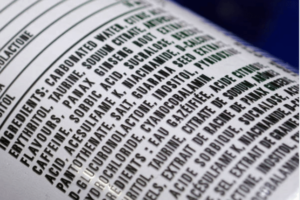Exploring the Impact of Artificial Ingredients on Health

In today’s fast-paced world, convenience often dictates our food choices, leading to the widespread use of processed and packaged foods. These products commonly contain food additives, including artificial ingredients, designed to enhance flavor, appearance, and shelf life. However, the increasing consumption of these additives has sparked an ongoing debate about their potential impact on human health. In this comprehensive blog, we will delve into the world of food additives, examining the various types, their role in the food industry, and the existing research on their effects on health. Let’s explore the arguments from both sides and gain a clearer understanding of the debate over food additives.
I. Understanding Food Additives
Food additives are substances added to foods during processing or preparation to improve taste, texture, color, and preservation. These additives can be either natural or artificial, and their usage has become an integral part of the modern food industry. Common types of food additives include preservatives, flavor enhancers, colors, and stabilizers.
Natural Additives: Derived from plants, animals, or minerals, natural additives are generally considered safe and may include ingredients like salt, sugar, vinegar, and plant extracts.
Artificial Additives: Synthetic compounds created in laboratories to mimic the properties of natural additives. Examples include artificial sweeteners, synthetic colors, and chemical preservatives.
Food additives play a crucial role in the food industry by enhancing the taste, appearance, and safety of processed foods. These benefits have driven the widespread use of additives in various food products. Let’s examine their key roles:
Flavor Enhancement: One of the primary reasons for using food additives is to enhance the flavor of processed foods. Flavor enhancers like monosodium glutamate (MSG) are widely used to add umami, the fifth taste, which imparts a savory and rich flavor. By enhancing taste, food additives make products more palatable and enjoyable to consumers.
For example, savory snacks, soups, and ready-made meals often incorporate MSG to boost their flavors and provide a satisfying taste experience.
Color Enhancement: Food additives, particularly artificial colors, are utilized to enhance the appearance of processed foods. Bright and appealing colors make products more visually attractive and appetizing to consumers. Additionally, colors can help differentiate between different flavors or variants of the same product.
For instance, candies, beverages, and desserts often use artificial colors like FD&C Red No. 40 and Yellow No. 5 to create vibrant shades that are visually appealing, especially to children.
Texture Improvement: Stabilizers and emulsifiers are food additives used to maintain the desired texture and consistency of processed foods. They prevent separation or settling of ingredients, ensuring that products remain visually appealing and pleasant to consume.
For example, ice creams and frozen desserts commonly contain stabilizers like guar gum and carrageenan to prevent ice crystals from forming and to create a smooth and creamy texture.
Preservation: One of the critical roles of food additives is to extend the shelf life of processed foods, reducing food waste and improving product availability. Preservatives inhibit the growth of bacteria, yeasts, and molds, preventing spoilage and maintaining product freshness over a more extended period.
Packaged foods such as canned fruits, processed meats, and bakery items often contain chemical preservatives like BHT and BHA to prolong their shelf life and retain their quality.

Improved Safety: Food additives also contribute to the safety of processed foods by preventing microbial growth and contamination. Antioxidants, like tocopherols and ascorbic acid, are used to protect fats and oils from oxidation, which can lead to rancidity and off-flavors.
For instance, potato chips and other snacks are often treated with antioxidants to maintain their freshness and prevent the development of off-flavors during storage.
Product Consistency: Food additives help ensure consistency in the quality and taste of processed foods, regardless of the variations in raw materials and production conditions. This consistency is crucial for brand loyalty and consumer satisfaction.
For example, a specific brand of instant soup or sauce will have the same taste and texture across different batches, thanks to the precise use of additives to maintain uniformity.
II. The Concerns Surrounding Artificial Ingredients
While food additives have undeniable benefits for the food industry and consumers, concerns have been raised about the safety of certain artificial ingredients. Let’s explore the main concerns:
Allergies and Sensitivities: Artificial ingredients, such as synthetic colors and preservatives, have been linked to allergic reactions and sensitivities in some individuals. Some people may experience adverse responses, such as skin rashes, hives, or gastrointestinal discomfort, upon consuming foods containing specific additives.
Common culprits include artificial colors like FD&C Yellow No. 5 (Tartrazine) and preservatives like sulfites. While food manufacturers must disclose the presence of these additives on labels, individuals with known sensitivities or allergies need to be vigilant about reading food labels to avoid potential triggers.
Health Impacts: Several studies have investigated the potential health effects of certain artificial ingredients on human health. While research is ongoing, some artificial additives have been associated with various health concerns:
a. Hyperactivity in Children: Synthetic colors, particularly FD&C Yellow No. 5 and Red No. 40, have been studied in relation to hyperactivity and behavioral issues in children. Although findings are inconclusive, some studies suggest that certain susceptible children may experience increased hyperactivity after consuming foods with these additives.
b. Migraines and Headaches: Some individuals report experiencing migraines and headaches after consuming foods containing artificial ingredients like MSG, aspartame, and certain synthetic colors. However, research on this topic has yielded mixed results, and individual responses can vary.
c. Digestive Problems: Certain artificial sweeteners, such as sorbitol and maltitol, have laxative effects when consumed in large quantities, leading to bloating, gas, and diarrhea in some individuals.

Safety Testing: Critics argue that the safety testing of food additives, particularly artificial ingredients, may not be comprehensive enough to fully understand their long-term effects on human health. While regulatory bodies set acceptable daily intake (ADI) levels for many food additives, the cumulative effects of multiple additives consumed together are not always well-studied.
Some experts advocate for more extensive and long-term studies to assess the impact of artificial ingredients on various age groups and vulnerable populations, such as children and pregnant women.
Natural Alternatives: Another concern is the preference for natural alternatives to artificial ingredients, especially among consumers seeking clean-label products. Some consumers prefer to avoid artificial additives altogether, opting for whole foods and products that use natural flavors, colors, and preservatives.
Several artificial ingredients have drawn significant attention and scrutiny due to their potential health implications. Here are some of the most debated additives:
Artificial Sweeteners: Aspartame, saccharin, and sucralose are commonly used artificial sweeteners, known for their calorie-free nature. While they are appealing to those seeking sugar alternatives, concerns have been raised about their impact on metabolism, gut health, and even their potential to increase cravings for sweet foods.
Synthetic Colors: Artificial colors like FD&C Red No. 40, Yellow No. 5, and Blue No. 1 are commonly used to make foods more visually appealing. Critics argue that these colors may be linked to behavioral issues in children and could exacerbate hyperactivity.
Preservatives: Chemical preservatives like butylated hydroxytoluene (BHT) and butylated hydroxyanisole (BHA) are used to extend shelf life. Some studies suggest that these preservatives may have carcinogenic properties and potential endocrine-disrupting effects.
Food additives are subject to regulatory oversight in many countries to ensure consumer safety. Authorities, such as the U.S. Food and Drug Administration (FDA) and the European Food Safety Authority (EFSA), assess the safety of food additives before approving their use in foods.
GRAS: In the United States, some food additives are designated as “Generally Recognized as Safe” (GRAS) based on historical use and scientific data. Manufacturers can use GRAS additives without formal approval from the FDA.
Acceptable Daily Intake (ADI): Regulatory agencies establish ADIs for specific food additives, representing the amount considered safe to consume daily over a lifetime.

III. Making Informed Food Choices
- Read Labels and Ingredient Lists:
When shopping for food products, take the time to read the nutrition labels and ingredient lists. Look for foods that have clear and transparent labeling, allowing you to identify the presence of any artificial additives. Familiarize yourself with common names of artificial ingredients to easily recognize them on labels.
- Identify Artificial Colors and Preservatives:
Artificial colors and preservatives are among the most debated food additives. To minimize potential risks, consider opting for products that use natural colors derived from fruits, vegetables, or herbs. Similarly, choose products with natural preservatives or those labeled as “preservative-free” when possible.
- Be Mindful of Artificial Sweeteners:
Artificial sweeteners are commonly found in sugar-free or low-calorie products. If you prefer to avoid them, choose products sweetened with natural alternatives like stevia, erythritol, or monk fruit extract.
- Seek Clean-Label Products:
Clean-label products are those with a simple and easily understandable ingredient list, often made with minimally processed and natural ingredients. Look for products with fewer additives and ingredients that you recognize and can pronounce.
- Prioritize Whole Foods:
Incorporating whole foods into your diet, such as fresh fruits, vegetables, whole grains, lean proteins, and natural fats, reduces the need for processed foods with added additives. Whole foods provide essential nutrients and are generally free from artificial ingredients.
- Limit Highly Processed Foods:
Highly processed foods often contain a higher concentration of additives. Limiting the consumption of heavily processed items, such as sugary snacks, frozen meals, and sugary beverages, can help reduce exposure to artificial ingredients.
- Educate Yourself:
Stay informed about the latest research and updates on food additives and their potential effects on health. Seek information from reliable sources, such as health organizations, scientific journals, and reputable nutrition experts.
- Advocate for Transparency:
Support initiatives that call for transparency in food labeling and regulation. Advocate for clearer labeling practices and comprehensive safety testing of food additives to protect consumer health.
- Personalize Your Diet:
Individual responses to food additives can vary. Pay attention to how your body reacts to specific additives and adjust your diet accordingly. If you suspect an intolerance or sensitivity, consult with a healthcare professional or a registered dietitian for guidance.
- Strike a Balance:
While being mindful of food additives is essential, remember that occasional consumption of foods with artificial ingredients is generally considered safe for most people. Strive for a balanced approach to your diet, focusing on variety, moderation, and whole-food-based choices.
The debate over food additives, especially artificial ingredients, remains a complex and evolving topic. While they play an essential role in the food industry, concerns about potential health implications persist. As consumers, we have the power to make informed choices by reading labels, choosing whole foods, and advocating for transparency in the food industry. The ongoing research and regulatory efforts will continue to shape the understanding and regulation of food additives, ensuring a safer and healthier food supply for all.




